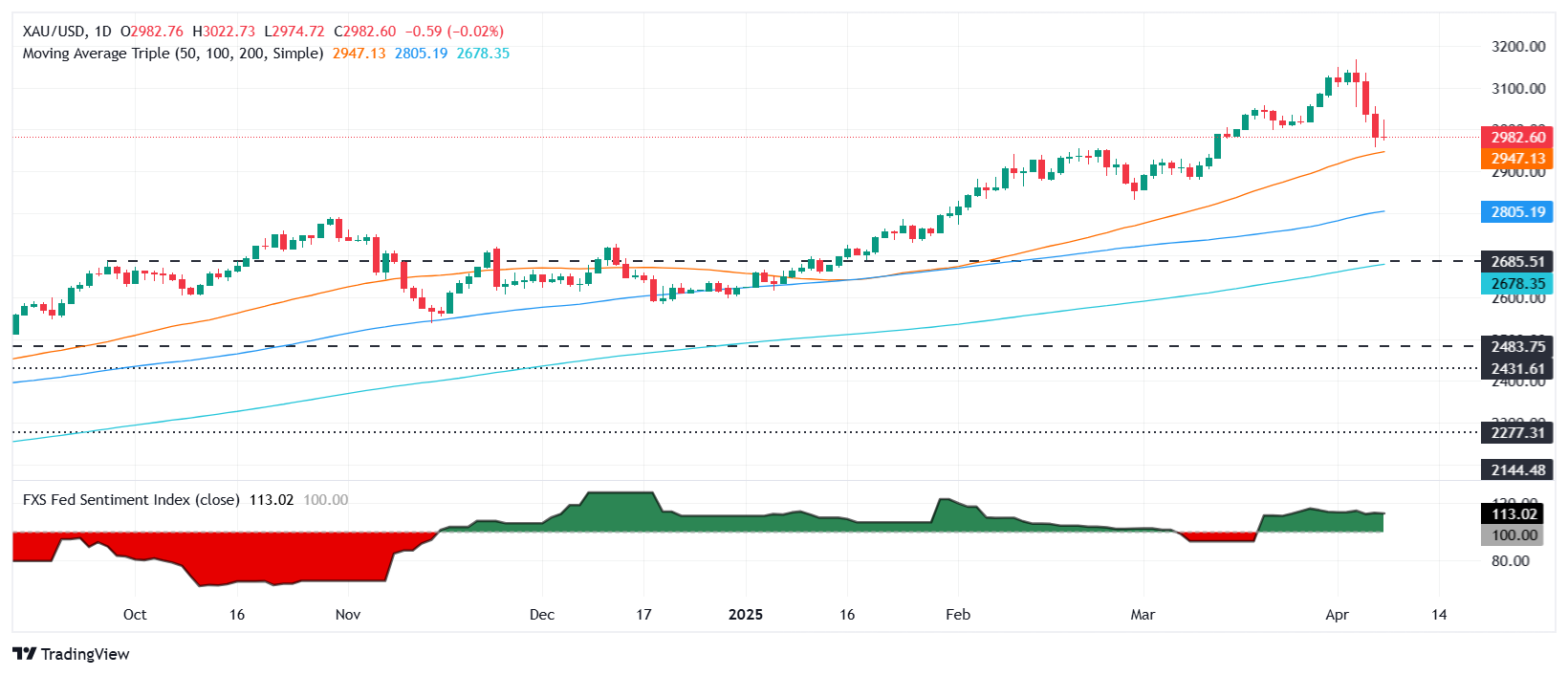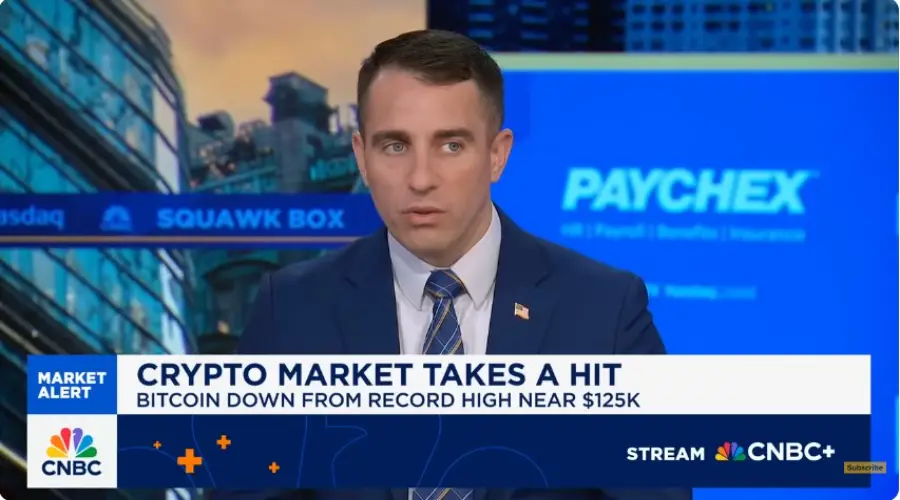- Gold ends a three -day run, restricted by the increase in treasure yields and low performance attraction.
- The Vix rises amid 104% tariffs on China and renewed recession fears; The actions lose initial profits.
- The president of the Fed, Daly, and Goolsbee warn that tariffs could increase inflation; The attention focuses on the FOMC minutes and the next data of the CPI/PPI.
The price of gold breaks three days of losses, consolidating below the figure of $ 3,000 as the US treasure yields increase, making metal without yield less attractive to investors. Despite the hopes of trade agreements between members, the “commercial war” between the US and China worries investors. At the time of writing, the Xau/USD quotes at $ 2,980, the Troy ounce, practically unchanged.
The feeling became negative as Wall Street recorded substantial losses. Monday’s rally was ephemeral since the bearish market resumed, with the volatility index (VIX) once again pushing towards higher levels, indicating that market participants remain insecure about economic perspectives.
The White House announcement that US would maintain 104% tariffs on China caused an increase in VIX. Consequently, the S&P 500, the Dow Jones and the Nasdaq erased their previous profits and fell on Tuesday.
However, gold prices fell as the US treasure yields shot down the entire performance curve. The Swaps market had valued a 40% probability of a Fed rate cut in May. In spite of this, the high US yet yields continue to press the Xau/USD.
Meanwhile, Federal Reserve officials crossed the news lines. The president of the Fed of San Francisco, Mary Daly, said that CEO feels insecure but optimistic about growth. She is concerned about an increase in inflation due to tariffs. Previously, Chicago Fed President Austen Goolsbee said tariffs are much higher than expected, adding that there is anxiety that high inflation returns.
The operators are attentive to the publication of the minutes of the last meeting of the Fed, which will be overshadowed by the latest inflation figures on the side of the consumer and the producer.
Daily summary of market movements: the price of gold remains firm, limited by the increase in real US yields.
- The real US yet yields increase six PB to 2.071%, as shown by the yields of the US Treasury values protected against inflation (Tips), a wind against gold prices.
- It is expected that the US consumer price index (CPI) falls from 2.8% to 2.6% year -on -year in March. It is projected that the underlying IPC decreases in the next twelve months, from 3.1% to 3%.
- The fears of recession have increased according to Goldman Sachs, which said that the possibilities of a recession increased from 35% to 45% in 12 months, while checking growth forecasts, with the bank waiting for the gross domestic product (GDP) to be 0.5%, due to “an acute tightening in financial conditions, boycots of foreign consumers and a continuous increase in political uncertainty.”
XAU/USD technical perspective: The price of gold is maintained below $ 3,000 the Troy ounce
The price of gold stabilized about 2,980 $, although the price share suggests that the operators are not finding acceptance beyond the $ 3,000 figure. The lack of a daily closure above the latter could trigger a simple mobile average (SMA) test of 50 days in 2,947 $. A rupture below that level could lead to the Xau/USD to the $ 2,900 mark before the 100 -day SMA at 2,805 $.

FAQS GOLD
Gold has played a fundamental role in the history of mankind, since it has been widely used as a deposit of value and a half of exchange. At present, apart from its brightness and use for jewelry, precious metal is considered an active refuge, which means that it is considered a good investment in turbulent times. Gold is also considered a coverage against inflation and depreciation of currencies, since it does not depend on any specific issuer or government.
Central banks are the greatest gold holders. In their objective of supporting their currencies in turbulent times, central banks tend to diversify their reserves and buy gold to improve the perception of strength of the economy and currency. High gold reserves can be a source of trust for the solvency of a country. Central banks added 1,136 tons of gold worth 70,000 million to their reservations in 2022, according to data from the World Gold Council. It is the largest annual purchase since there are records. The central banks of emerging economies such as China, India and Türkiye are rapidly increasing their gold reserves.
Gold has a reverse correlation with the US dollar and US Treasury bonds, which are the main reserve and shelter assets. When the dollar depreciates, the price of gold tends to rise, which allows investors and central banks to diversify their assets in turbulent times. Gold is also inversely correlated with risk assets. A rebound in the stock market tends to weaken the price of gold, while mass sales in higher risk markets tend to favor precious metal.
The price of gold can move due to a wide range of factors. Geopolitical instability or fear of a deep recession can cause the price of gold to rise rapidly due to its condition of active refuge. As an asset without yield, the price of gold tends to rise when interest rates lower, while the money increases to the yellow metal. Even so, most movements depend on how the US dollar (USD) behaves, since the asset is quoted in dollars (Xau/USD). A strong dollar tends to keep the price of gold controlled, while a weakest dollar probably thrusts gold prices.
Source: Fx Street
I am Joshua Winder, a senior-level journalist and editor at World Stock Market. I specialize in covering news related to the stock market and economic trends. With more than 8 years of experience in this field, I have become an expert in financial reporting.







